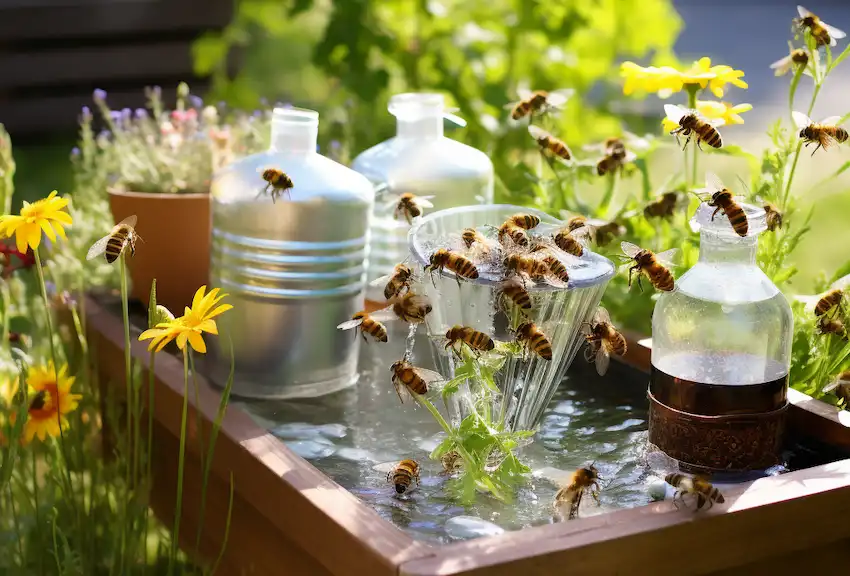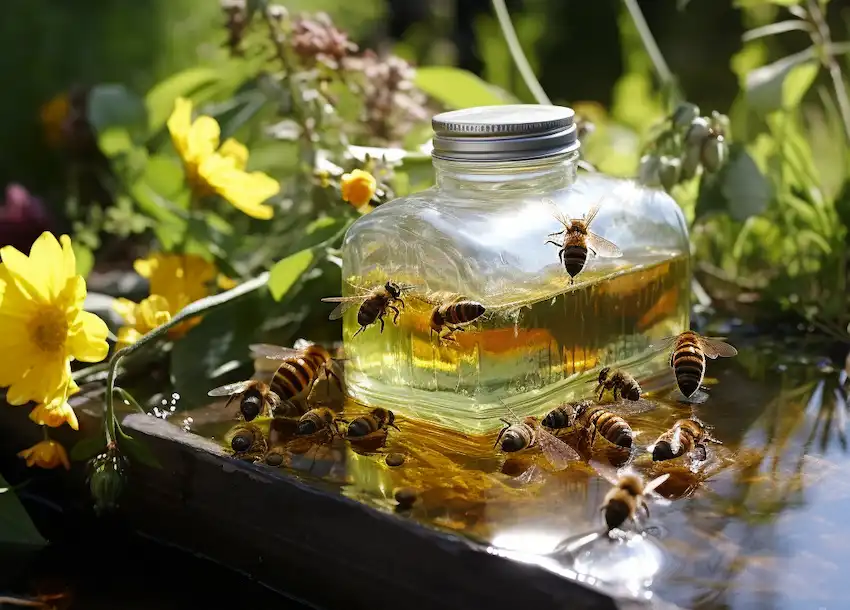Why and How to Make a Bee Water Station
In the bustling ecosystem of your garden, inviting and nurturing bees is an invaluable step toward fostering a thriving environment. While nectar-rich flowers play a pivotal role in attracting these essential pollinators, providing a bee water station is equally vital. In this guide, we’ll delve into the significance of a bee water station, explore multiple methods to create one, and offer insights on its installation to aid both novice and seasoned gardeners.
The Importance of a Bee Water Station:
Bees, like all living creatures, require water for hydration and to maintain hive humidity. Providing a dedicated water source in your garden not only supports their basic needs but also aids in preventing bees from venturing into potentially harmful or inconvenient places, such as bird baths or pools. By offering a water station, you’re not just creating a hospitable space for bees but also contributing to the sustainability of your local ecosystem.

Where and How to Install a Bee Water Station:
Selecting the right spot for your bee water station is crucial. Choose an area that receives ample sunlight and is away from heavy foot traffic. It should be easily accessible for bees but safe from potential predators.
Methods to Create a Bee Water Station:
1. Shallow Bowl with Rocks:
One simple method involves using a wide, shallow bowl filled with water and rocks. The rocks provide a landing platform for bees, ensuring they have a safe spot to perch while sipping water. Ensure the water level is shallow to prevent drowning.
2. Wooden Platform with Trenches:
Crafting a wooden platform with shallow trenches and an upside-down jar filled with water is another effective approach. Carve shallow, narrow trenches on a piece of wood and position an inverted jar filled with water at its center. As bees land on the wood, they can access the water from the jar through the carved trenches.
3. Clay Saucer with Corks or Sponges:
Utilizing a clay saucer or plate and placing corks or sponges partially submerged in water is a resourceful method. The corks or sponges act as floating islands for bees to land on while accessing the water.
4. Adding Flavor with Sugared Water:
While clean water is sufficient, adding a touch of sweetness with a mild sugar solution (mixing 2 tablespoons of sugar per 1 cup of water) can attract bees more effectively. However, ensure the concentration is light to prevent potential harm to the bees.

By incorporating a bee water station into your garden, you’re not only aiding these industrious pollinators but also contributing to the biodiversity of your ecosystem. Experiment with these methods to create a haven for bees, promoting a harmonious coexistence between your garden and these essential creatures.



















